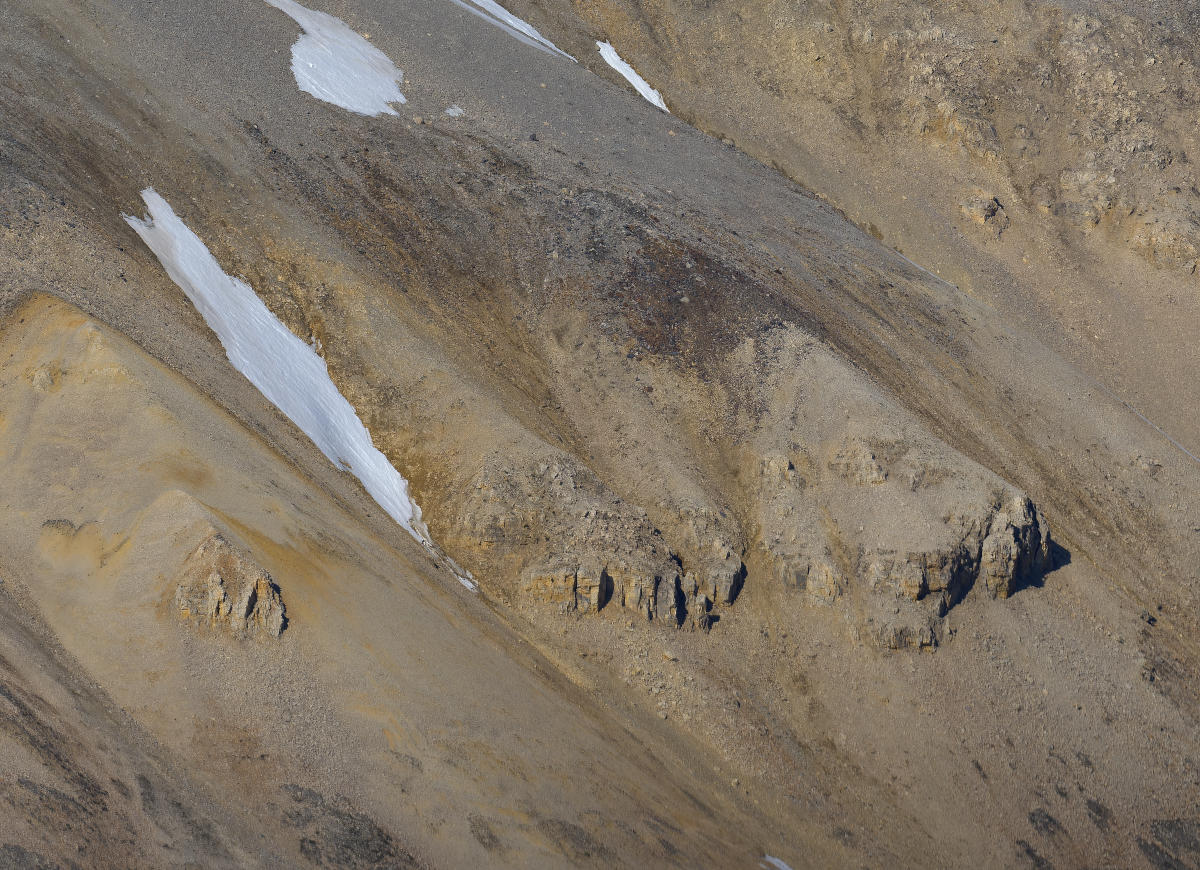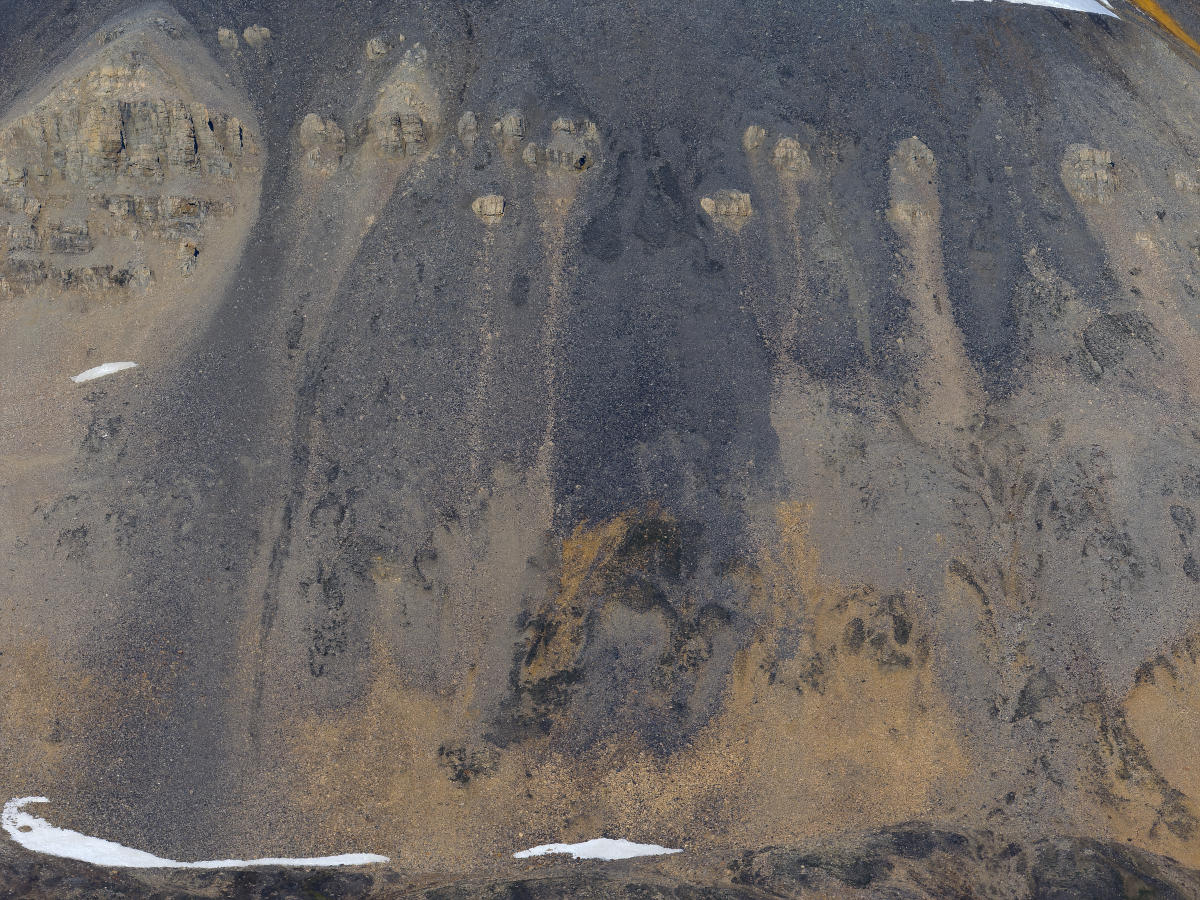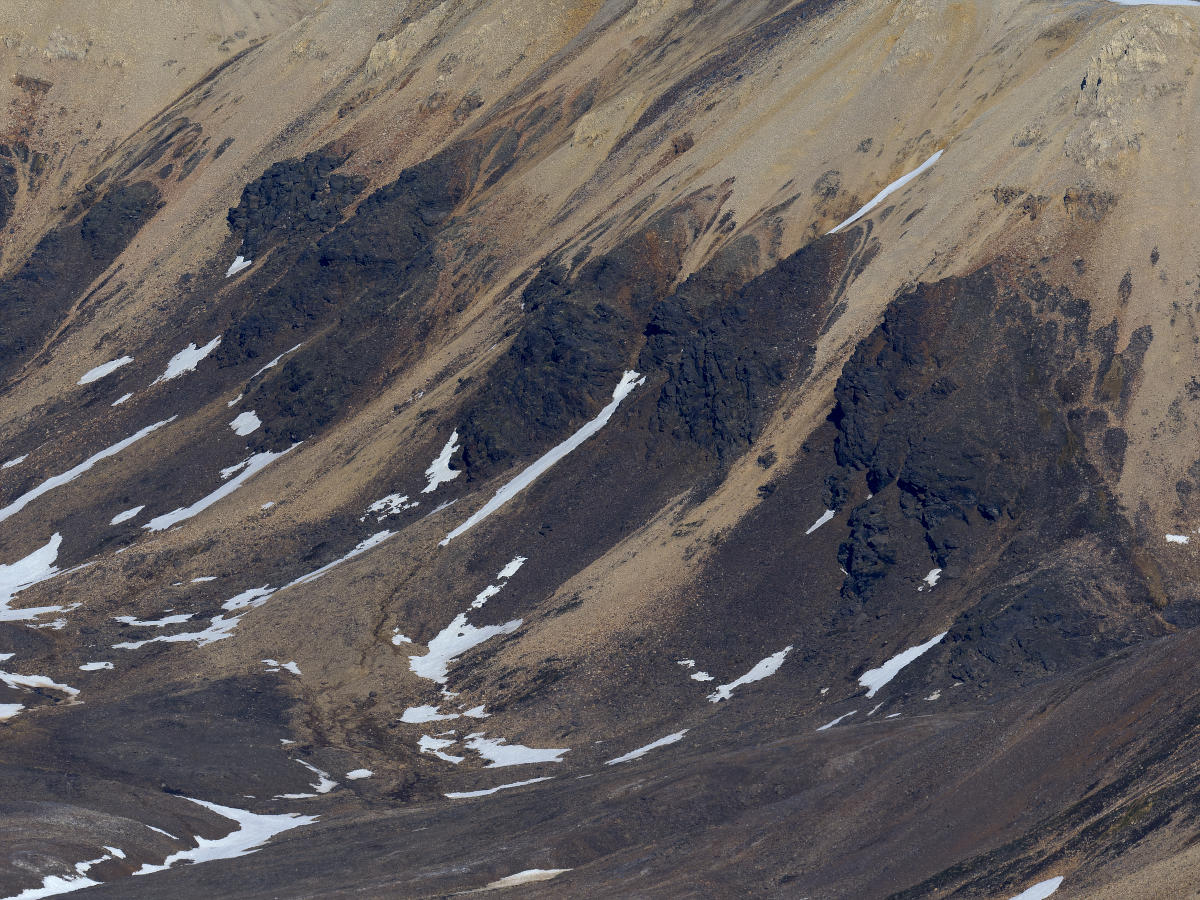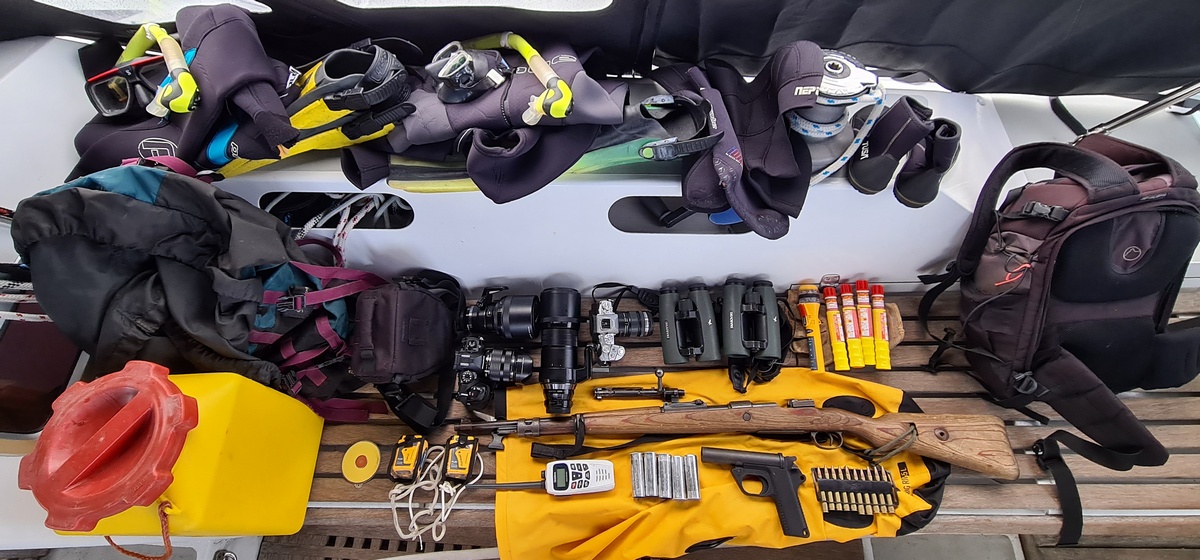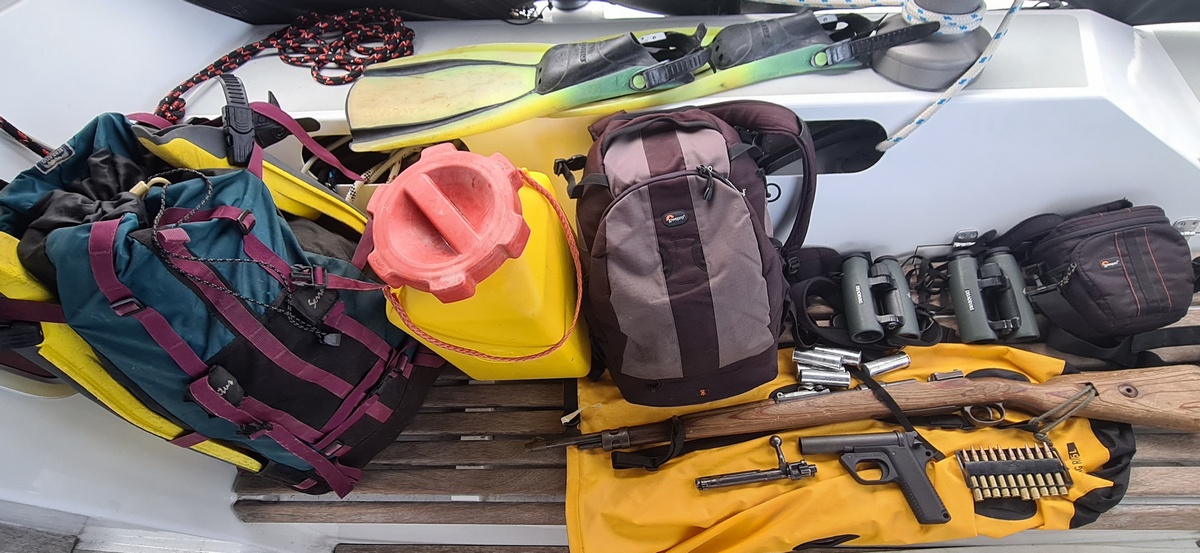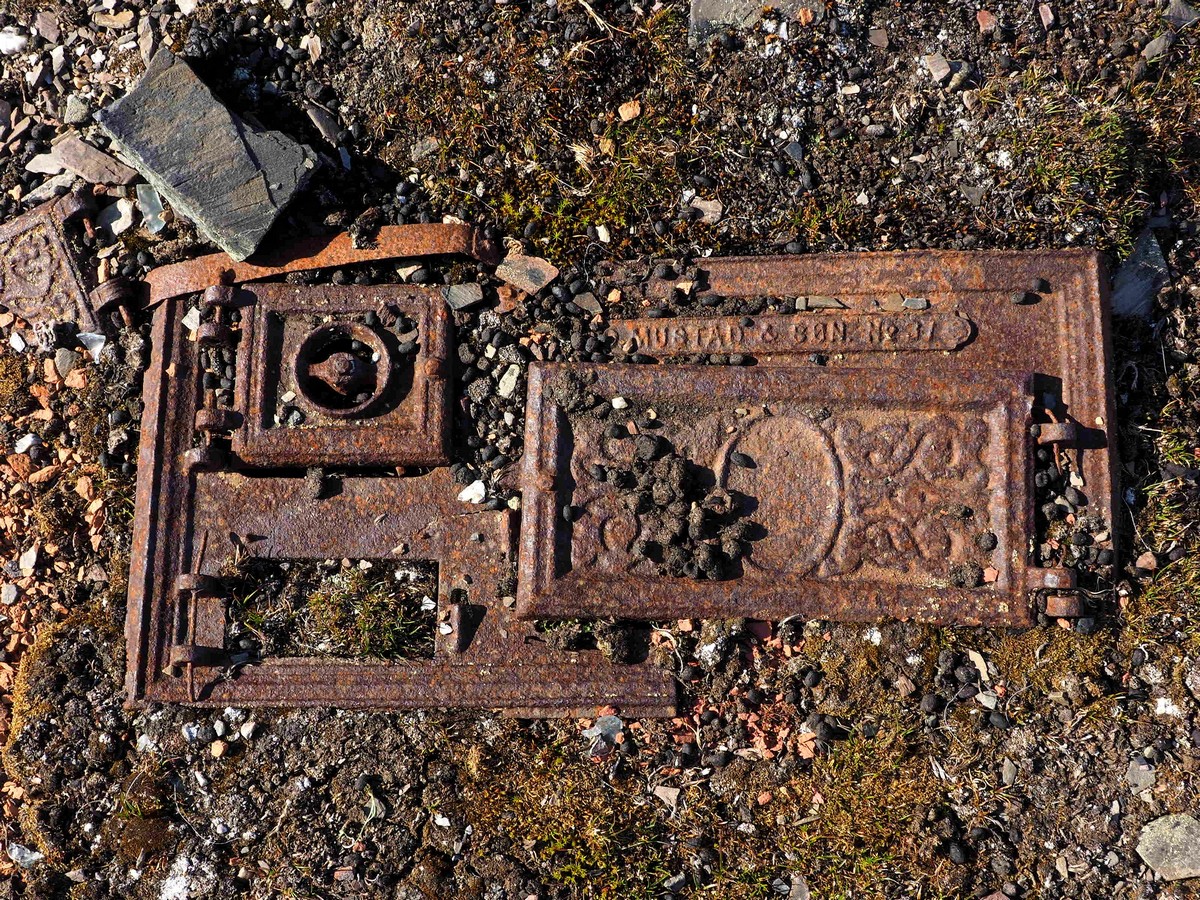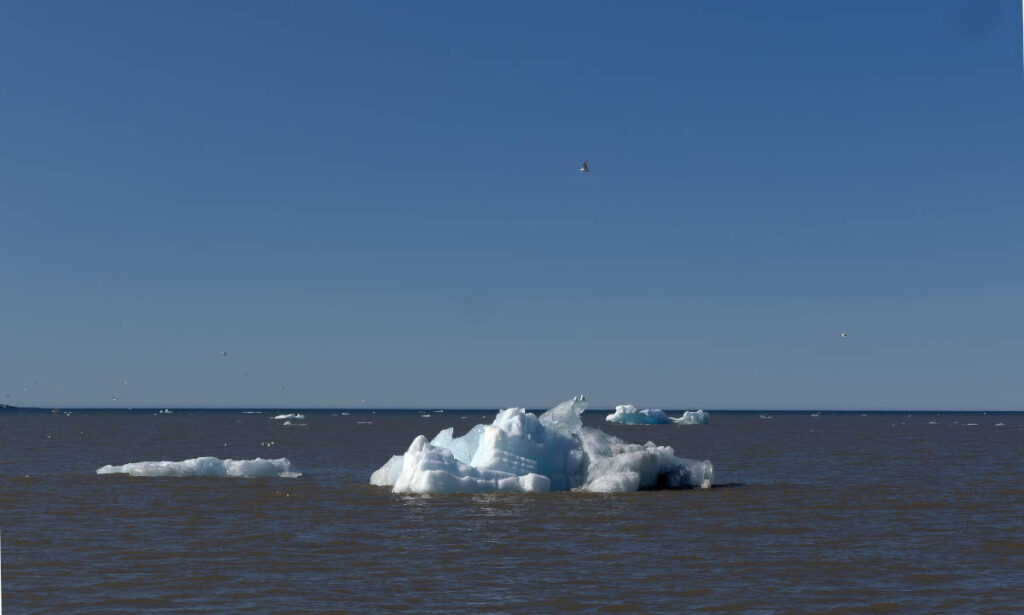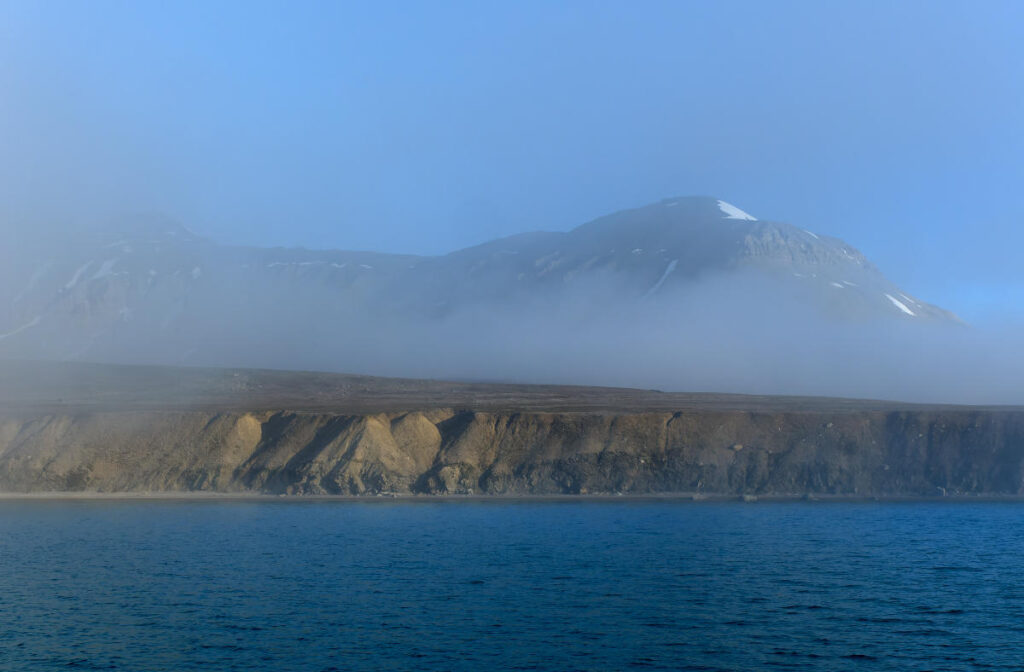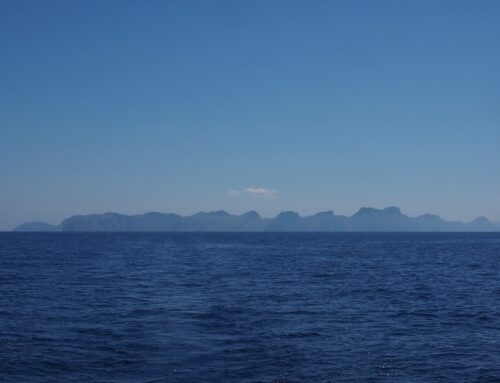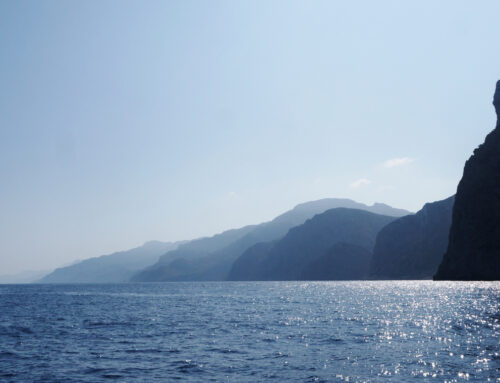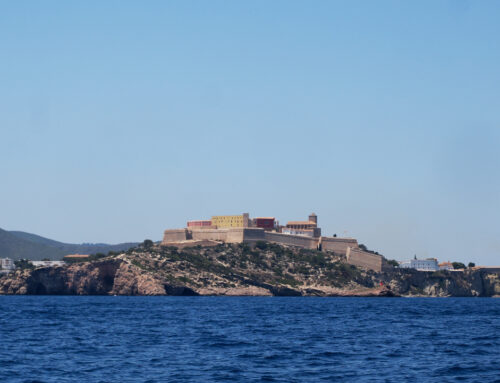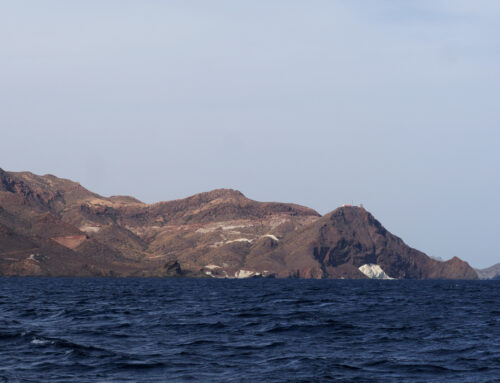On land the first time!
OTHER-WORLDLY
Anchored at Ebeltofthamna, once the wind dropped, we sat in an almost silent world. In front of us, and astern of the boat, was a broad shallow lagoon, and running out from this to the peaks ringing the lagoon, a huge wide bowl of tundra that rose smoothly and slowly to the cliffs and ramparts of the ridgelines.
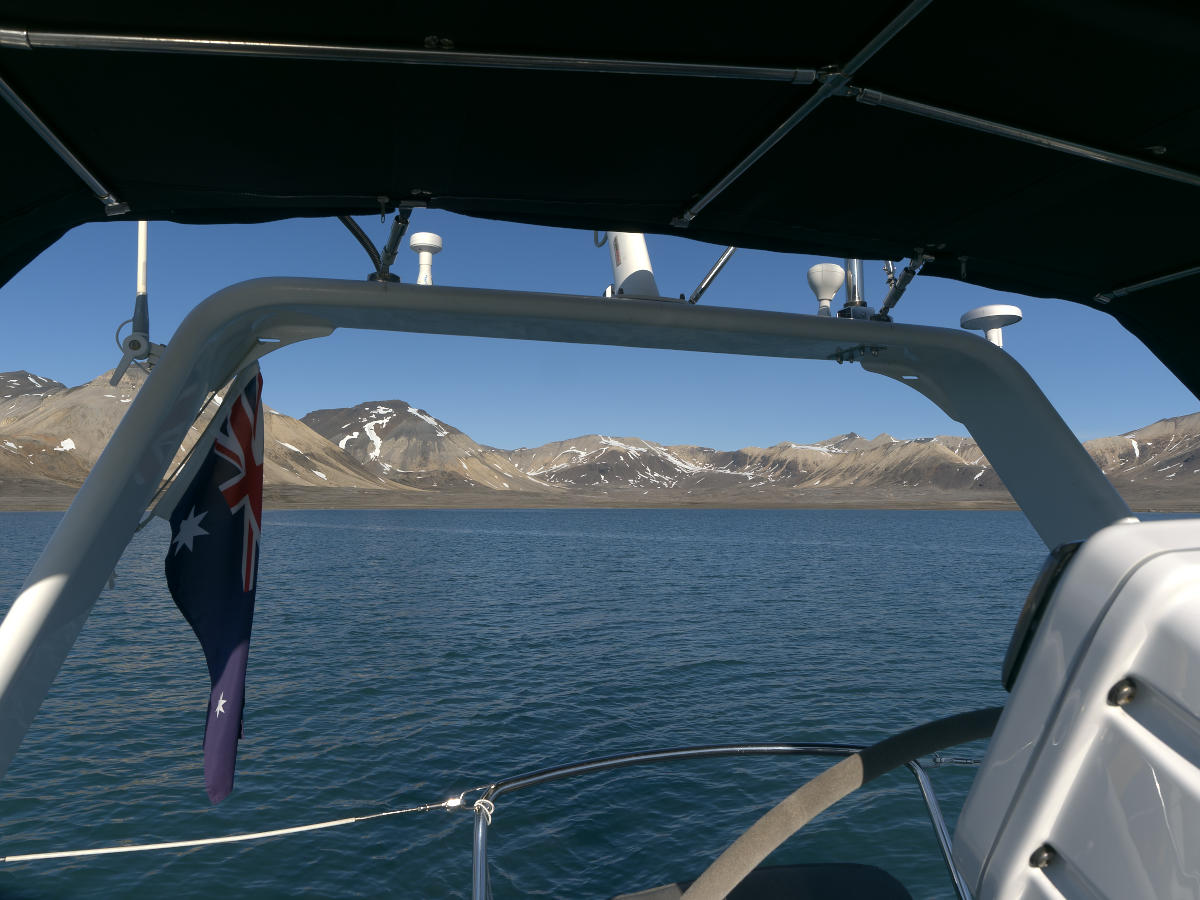
View from our backdoor to Ebeltofthamna lagoon and tundra.
On the lagoon a few eider females, tailed by their trains of chicks, swam placidly and quaked contently, while spread across the tundra widely a handful of widely separated reindeer moved slowly, heads down, feeding.
Interesting structures and colours on the mountains.
Behind us, the fjord spread smooth and blue to the glaciers and mountains of the opposite shore. Icebergs, blue, white, and gravel black, moved in unison, zombie-like and at the whim of the tide.

Icebergs floating through the fjords.
We floated between and apart from these two worlds, warm in the bright sunshine, in our own boat world. The slap of a wave, the tick and hiss of icebergs, the sound of a snow bunting, these were the sounds of these worlds but they came only intermittently as we rocked lazily on the water.

Yuma at anchor in Ebeltofthamna.
GOING ON-SHORE THE FIRST TIME
The next morning was clear and bright again. Our plan for today was to do a bit of exploring ashore. This required the assembly of the necessary gear, the usual ‘we are off for a stroll’ stuff, water, cameras, binoculars etc. But, of course, polar bears complicate the issue. You need to carry the necessary polar bear deterrents – rifle, ammunition, signal gun, flashbangs, air horn. And you need to carry the things that will allow you to get back to your boat once a polar bear has destroyed your dinghy – wet suit, booties, hoodies, gloves, fins, mask, snorkel – or summon help should that not be possible –vhf radio, epirb, flares and signal mirror.
Going for a hike Svalbard-style, unpacked (left) and packed (right).
By the time that has all been assembled, packed for walking and waterproofed for the dinghy trip ashore, the dinghy needs to go in the water, the outboard loaded and blimey, it’s almost lunch time!
We were anchored off a small headland, so the first thing we did was a reconnoitre for polar bears on the eastern side of the headland. Nothing seen we headed back to the western side, no bears there either, so we landed and hauled the dinghy above the tideline. Weaponry half-loaded, trigger released, and shouldered we wandered up to the top of the headland. This point gave us a good view of the surrounding country for another bear survey.

No polar bears to be seen.
HISTORICAL SITES AT EBELTOFTHAMNA
With no bears seen, we set about examining the remains of hunter’s huts, with the usual mix of broken rum bottles, old stoves, bricks, timber and other stuff.

Whaling and trapping remains. Note dinghy in the background (left).
Remains at Ebeltofthamna, including a hunter’s hut, and an old stove.
Further off on the eastern side of the headland, a dozen or so graves hold the human relicts of the 16th century whaling site across the lagoon. Roughly rectangular and slightly sunken piles of slate and rock, they lay, unmarked and east facing, waiting for that promised new dawn. They have waited a long time and perhaps they have a long time yet to wait. But what a spot to be waiting! Spectacular surrounds and so peaceful. I’m sure none of the occupants were pleased to die here far away from family and friends, and likely scurvy and whaling accidents don’t make for easy deaths, but if dying here means that this place is where one must wait for eternity then, at least in this small thing you’ve done well.
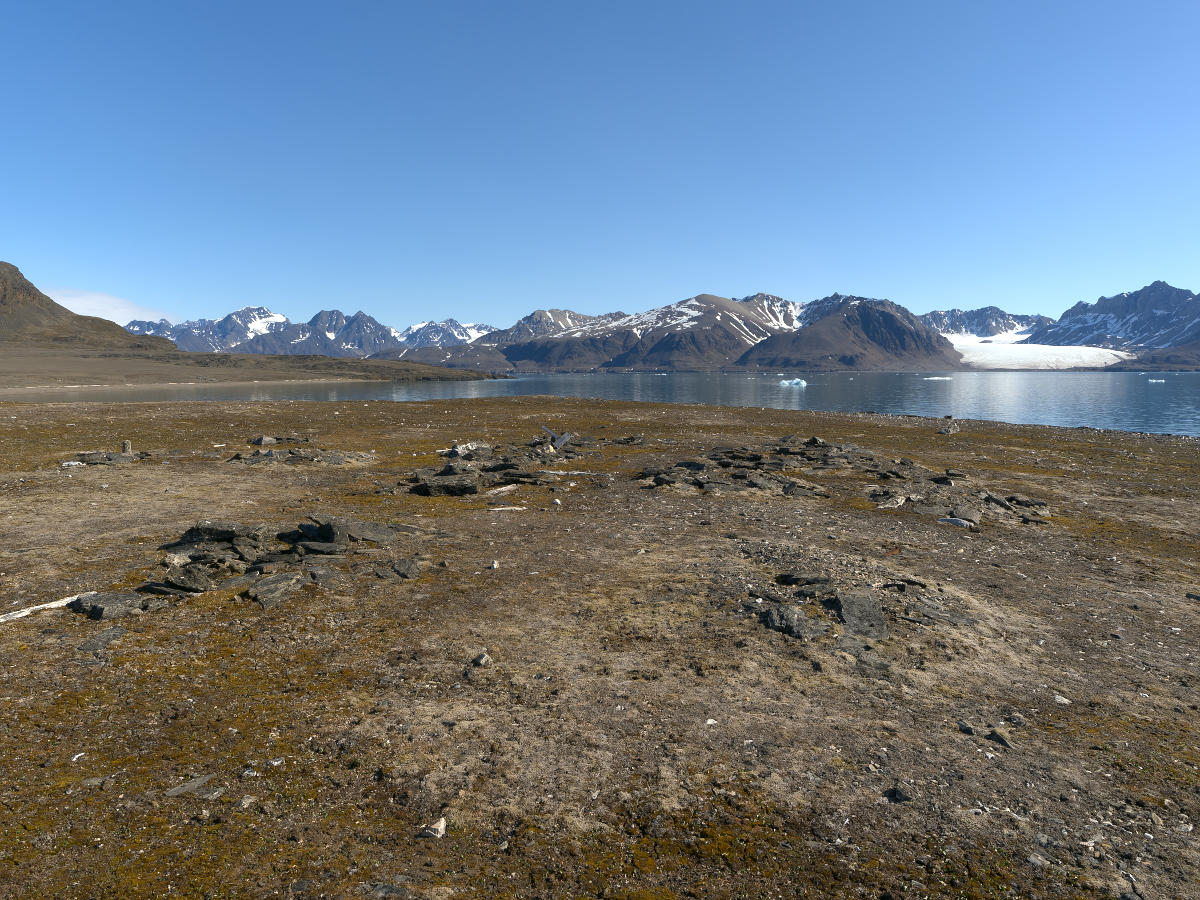
Graves at Ebeltofthamna.

Life in amongst all the rubbish! A snow bunting.

Frederieke checking for polar bears.
We walked back across to the eastern beach before circling across the now dry bog and heading back to the dinghy and to Yuma for a late lunch.

Colourful Moss Campion. These can grow over 100 years old.
After lunch we took the dinghy along the southern spit to see if we could spot the old try-works (i.e. whale blubber ovens) from the water, but after seeing a walrus surfacing along the shoreline we thought the better of it and turned around.
FURTHER NORTH
Back at Yuma, we checked the weather forecast and decided that tomorrow was going to be a good day to travel further north before a storm was going to pass over. This would mean a 0400 start, so we called it an early night.

